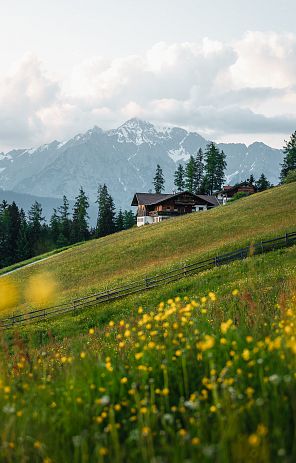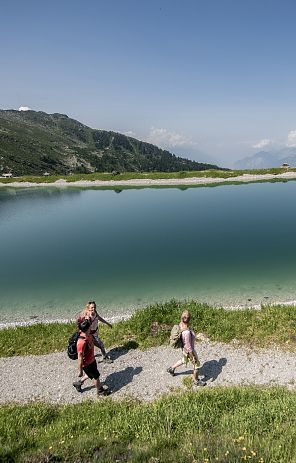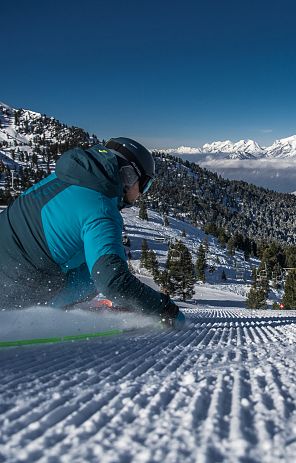The miraculous image. From Absam
Let Johann Puecher, Rosina's brother, tell us himself what happened in his father's house in 1797. At the age of 76, he wrote the following in the presence of two witnesses:
On January 17, 1797, in the afternoon, my sister, an already grown girl (note: 18 years old) named Rosina, was sewing in the room on the ground floor at the table opposite the window. Suddenly - between 3 and 4 o'clock - she saw what had never been seen before, an image of the Mother of God drawn on a pane of the inner window...
...She called to her mother, who was also present, but in another part of the room. The mother rushed in and was quite frightened at first when she saw the picture of the Blessed Virgin, thinking that some misfortune might have befallen the father or me in the salt mountain where we were working. So she said to Sister Rosina that we should pray a little, which we did. After praying, the mother wiped the picture away with a cloth, for it was only open; but you see, as soon as it was wiped away, it was there again as before. The appearance of the image took place on Tuesday, and on the following Thursday father and I came home from the mountain quite well. We were amazed and delighted to see what had happened in the meantime. I was 16 years old on January 17, 1797 and have kept everything that happened in my memory."
(The original of this record is privately owned. It was abridged from the 1955 Pfarrblatt No. 2).
Scholars from the University of Innsbruck, the mathematician Franz von Zollinger, the chemistry professor Dr. Schöpfer, the famous fresco painter Josef Schöpf from Telfs, the two master glaziers Schwänninger and Appeller examined the painting in the presence of representatives of ecclesiastical and secular authorities.
The report:
"After careful examination, with apothecaries, spirits and rubbing, also with strong juices and water, it did indeed go out, but soon reappeared as before. Then the mirror-grinder endeavored with his so-called politura to eradicate this, but also in vain, as the image was once again completely visible as before, as soon as it had been cleaned and removed with the wet sponge.
Finally, the glazier Apeller made his experiment with moistened trippel (note = diatomaceous earth, mountain flour; mineral of the Tertiary period, which was formerly used for grinding and polishing) and polished one and the other part of the pane with glass lead with the result that completely clear and pure glass appeared in these places, the image disappeared there and no longer revived."
The protocol was concluded with the remark "Since, as a result of the investigation, a completely natural cause can be assumed, the natural effect is not to be equated with a miracle." (Document in the Absam and Thaur parish archives; taken from the parish bulletin 1952, No. 5)
The faithful people of Absam and the whole of Tyrol were not deterred. "Where the Son is, there the Mother must be!" With these words, the people carried the miraculous image into the church in a procession with all the bells ringing solemnly. This took place on June 24, 1797.
At first the picture stood on the high altar, but now it has its place - accessible to everyone - under the mural of the Gothic Madonna. Since then, countless pilgrims have come and continue to come to pray to Our Lady of Absam for comfort and help.



